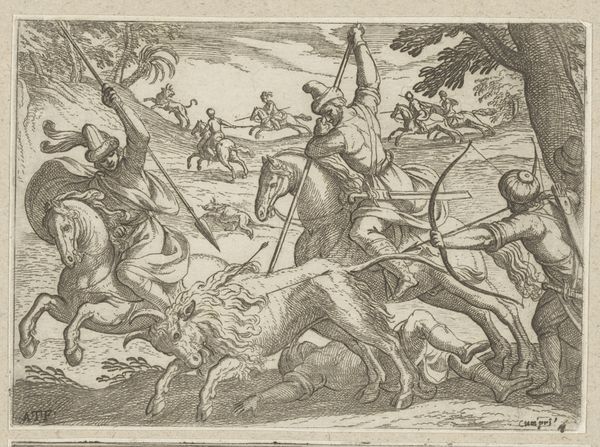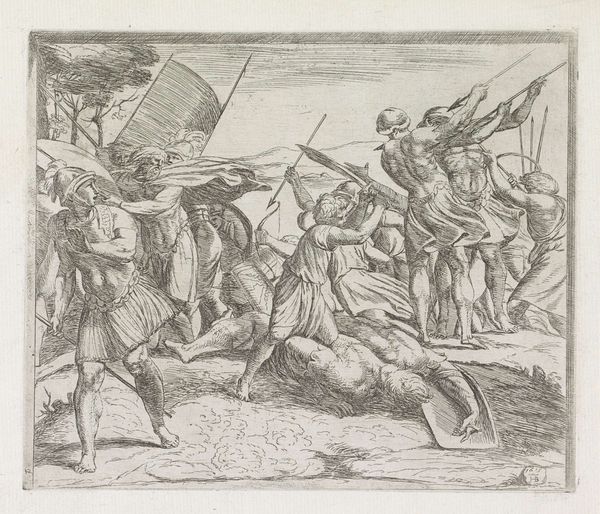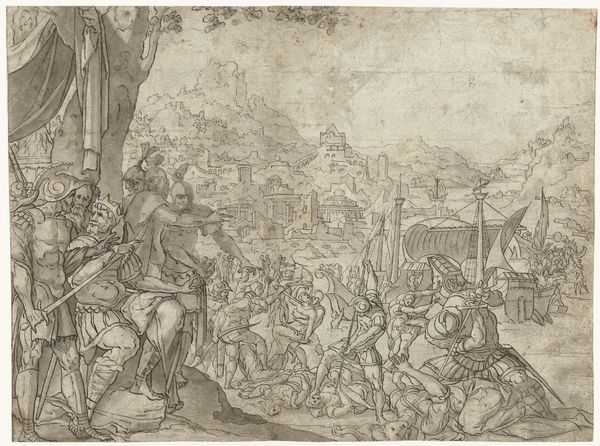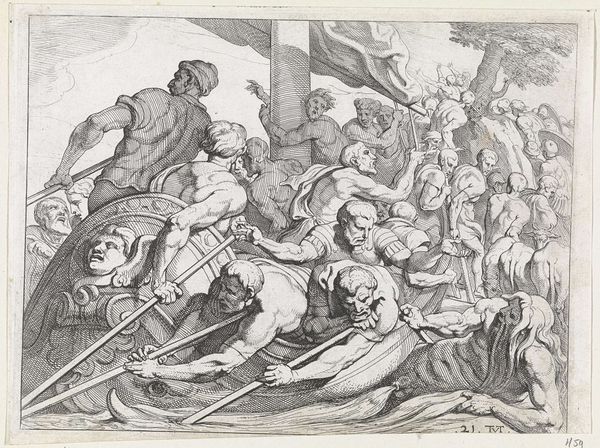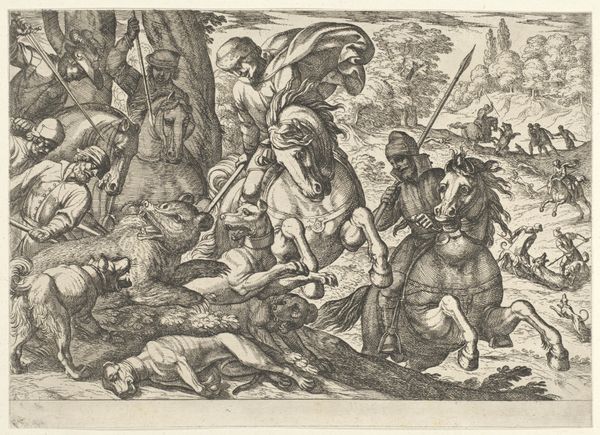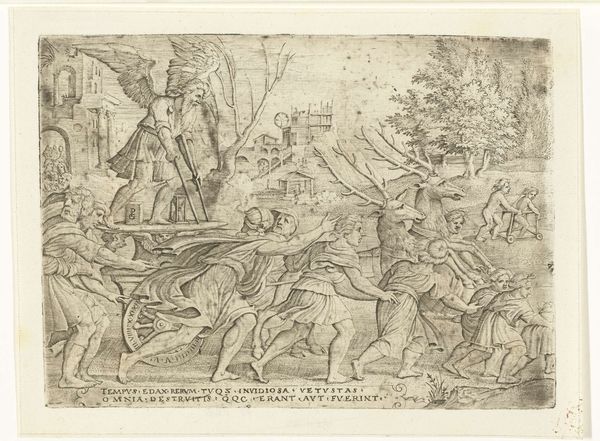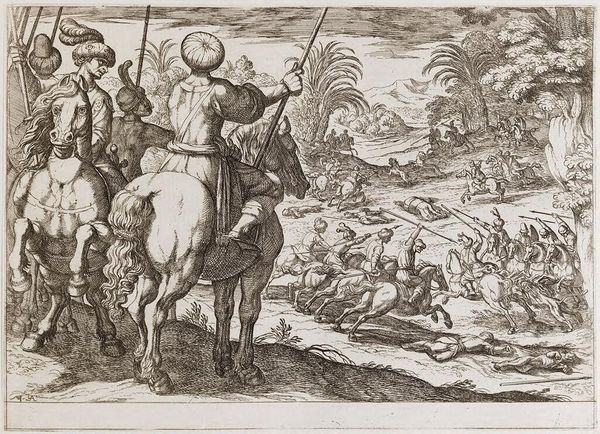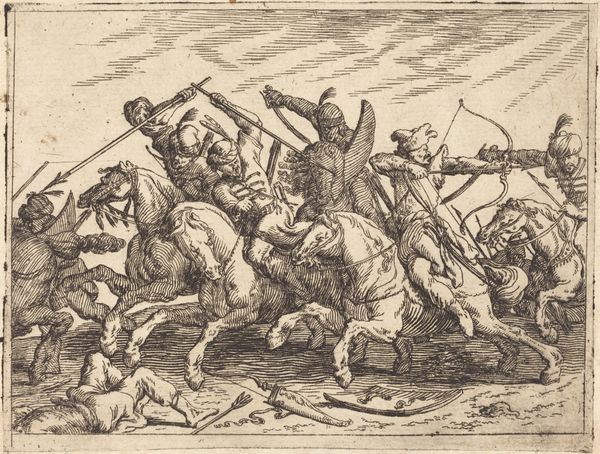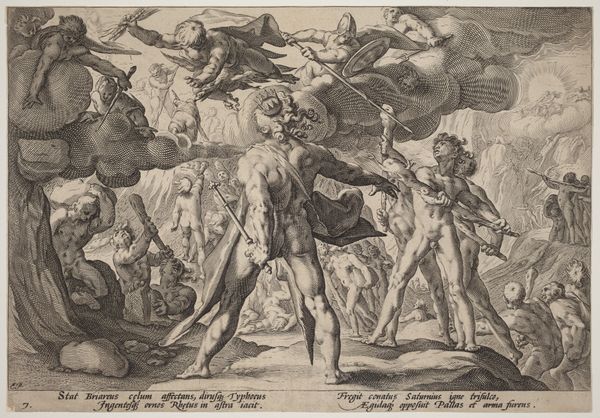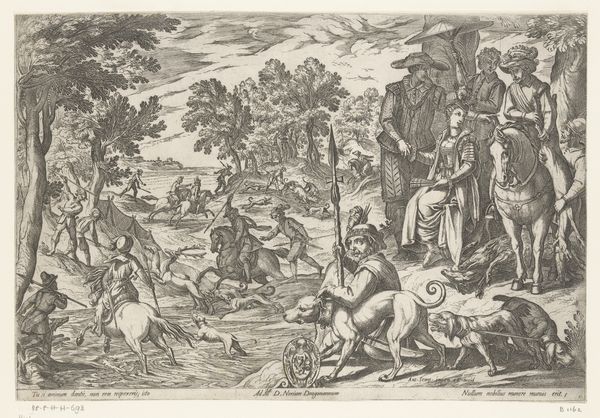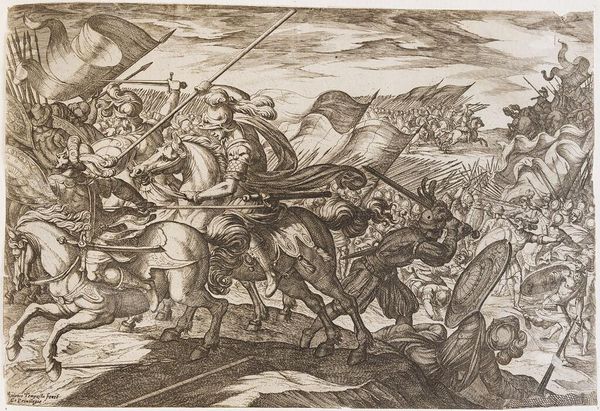
drawing, paper, ink
#
portrait
#
drawing
#
medieval
#
narrative-art
#
ink painting
#
figuration
#
paper
#
11_renaissance
#
ink
#
line
#
history-painting
Dimensions: height 236 mm, width 372 mm
Copyright: Rijks Museum: Open Domain
Editor: Here we have Jan van Scorel's ink drawing on paper, "The Stoning of Saint Stephen," created before 1541. The sheer activity is overwhelming; it's chaotic. What can you tell me about it? Curator: Well, consider the historical and religious context. This piece depicts a significant event: the martyrdom of Saint Stephen. Jan van Scorel presents a pivotal scene used to enforce social norms through religious narrative. Think about how such images functioned within society: Did it reflect existing societal structures? Did it shape them? Editor: It definitely looks like a harsh, dramatic depiction. How did it affect people when they viewed it? Curator: In the context of 16th-century religious and social tensions, visual representations carried significant power. It would have been understood that the men were in charge of dispensing justice and order, and viewers were taught, and possibly feared, these men. What effect do you think the medium – drawing, rather than painting – had on its reception? Editor: Good point! Being a drawing on paper suggests it may have been a preparatory sketch, maybe not intended for a grand display like a painting. It may have allowed for circulation of these views within more scholarly circles. I hadn't considered how the artwork’s distribution impacts its purpose. Curator: Exactly. Was this intended for public consumption to incite social commentary or was this created as a study that served as an artifact of personal exploration, perhaps even a statement for religious reform during times of great upheaval? Consider, too, the role patrons play in disseminating cultural perspectives. Editor: I see how unpacking the historical environment gives so much more weight to the image itself. The context surrounding production, distribution and reception – is essential. Thank you. Curator: Yes, it shows the relationship between the image, religious upheaval and political will. Thinking about the purpose behind visual expression changes how we experience art.
Comments
No comments
Be the first to comment and join the conversation on the ultimate creative platform.
